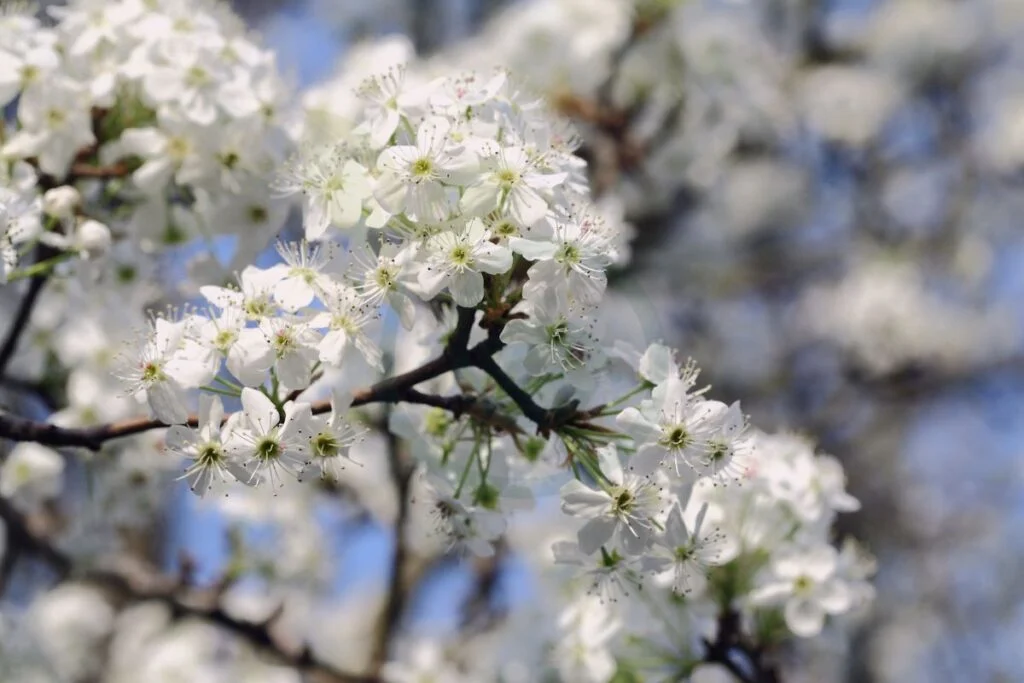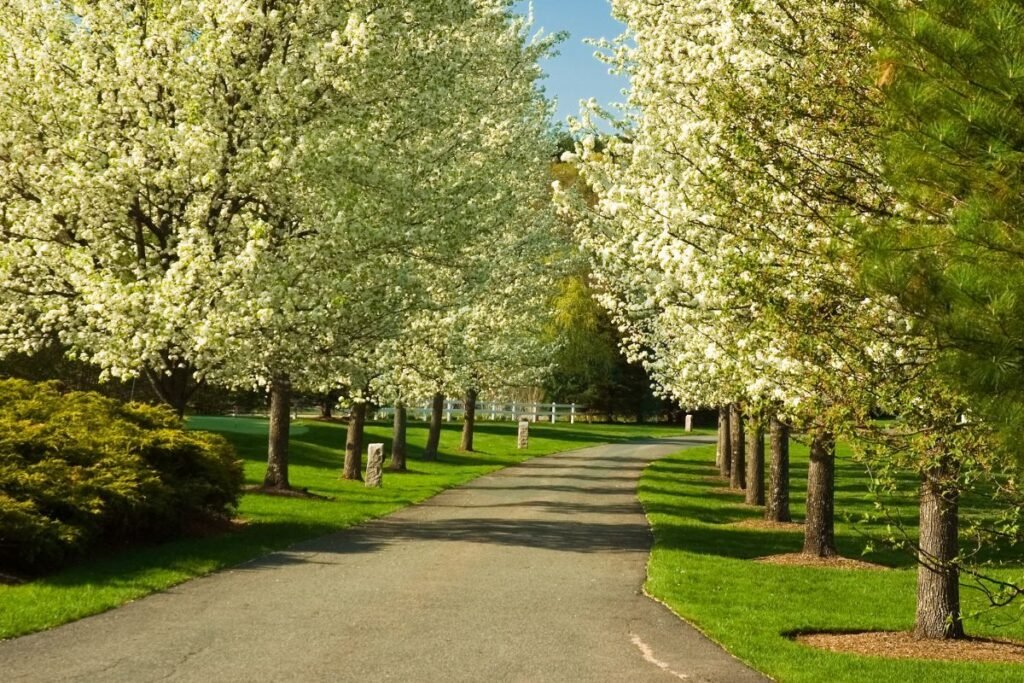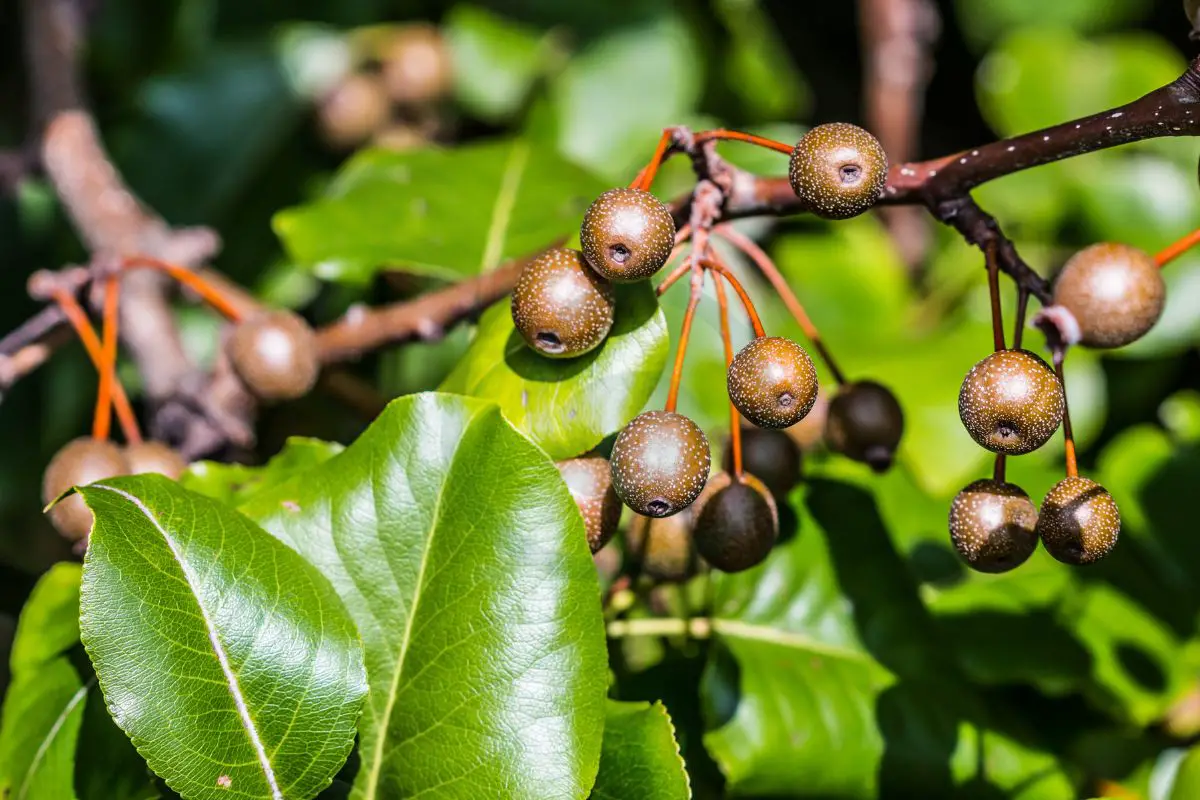Ever wondered why Bradford pear trees emit such a foul odor? Brace yourself for the surprising truth behind their unpleasant smell. Get ready to dive into the intriguing reasons that make these trees infamous for their stench. Curious about what causes this distinct fragrance that can turn heads for all the wrong reasons? Let's unravel the mystery together and shed light on why Bradford pear trees have such a bad reputation in terms of scent.
Key Takeaways
- Understand the Origins: Bradford Pear trees, introduced for their ornamental value, have become controversial due to their strong, unpleasant smell.
- Addressing the Odor: The distinctive smell from Bradford Pear trees is caused by certain compounds, making it important to consider alternatives in landscaping.
- Community Effects: The invasive nature of these trees can impact local ecosystems and biodiversity, urging communities to choose native species for planting.
- Health Considerations: Apart from the odor issue, the trees can trigger allergies and pose health risks, emphasizing the need for careful management and removal.
- Environmental Impact: Bradford Pear trees can outcompete native plants, affecting wildlife and ecosystems negatively, highlighting the importance of sustainable landscaping choices.
- Choosing Wisely: When landscaping or planting trees, opt for native species that support local biodiversity and are less invasive than Bradford Pear trees.
Bradford Pear Tree Origins
Origin Story
Bradford pear trees were introduced in the United States in the early 1960s as a cultivar of the Callery pear tree, which is native to China and Vietnam. The main goal was to create an attractive ornamental tree known for its stunning flowers. These trees quickly gained popularity due to their fast growth and beautiful appearance.
The introduction of Bradford pear trees aimed at enhancing landscapes with their abundance of white blossoms. However, despite their aesthetic appeal, these trees have become problematic due to their invasive nature. They spread rapidly and outcompete native plants, posing a significant threat to local ecosystems by reducing biodiversity.
Invasive Nature
The invasive characteristics of Bradford pear trees have caused concern among environmentalists and conservationists across various regions in the United States. Their rapid proliferation disrupts natural habitats by crowding out indigenous plant species essential for ecosystem balance. This aggressive behavior not only alters local flora but also impacts wildlife that rely on native plants for food and shelter.
As these trees continue to spread uncontrollably, they jeopardize the delicate balance within ecosystems by dominating areas where other plant species would typically thrive. The unchecked growth of Bradford pear trees can lead to long-term ecological imbalances that may take years or even decades to rectify.
Unpleasant Smell Explained
Chemical Compounds
The unpleasant smell that emanates from Bradford pear trees is a result of chemical compounds known as amines. These compounds are released into the air during the flowering season, which typically occurs in early spring, around March or April. Amines, found not only in Bradford pear trees but also in other plants, are responsible for producing various odors. When these compounds are released by the tree's blooms, they contribute to the foul odor that many people find unpleasant.
Amines play a crucial role in creating the distinct smell associated with Bradford pear trees' blooms. As these compounds are emitted into the air during the blooming period, which lasts for about two weeks, they interact with surrounding elements and create an overpowering scent. This phenomenon is not unique to Bradford pear trees; many plants utilize amines to produce specific scents as part of their natural processes.
Blooming Season
During their blooming season, Bradford pear trees showcase clusters of white flowers that add beauty to landscapes but come with a strong smell. The blooming process usually occurs when winter transitions into springtime, marking new growth and vitality for these trees. Throughout this time frame of approximately two weeks, individuals can easily detect the potent fragrance produced by these blossoms.

The distinctive aroma linked to Bradford pear tree blossoms tends to be most pungent during their peak blooming period in early spring. As temperatures rise and daylight hours increase after winter dormancy ends, these deciduous trees burst forth with beautiful white flowers while simultaneously releasing powerful scents rich in amines.
Impact on Communities
Negative Perception
Bradford pear trees are often associated with an unpleasant smell, described as akin to rotting fish or sewage. This offensive odor has led to a negative perception of these trees among homeowners and communities. Consequently, efforts have been made to remove and replace Bradford pear trees with alternative species due to the unfavorable scent they emit.
The unpleasant odor emitted by Bradford pear trees has caused many people to view them negatively. Homeowners and communities find the smell off-putting, likening it to that of rotting fish or sewage. As a result, there is a general consensus that these trees are not desirable in residential areas.
Impact on Surrounding Plants
Beyond their disagreeable smell, Bradford pear trees also adversely affect surrounding plants by outcompeting them for essential resources like sunlight, water, and nutrients. Their dense canopy creates shade that inhibits the growth and survival rates of neighboring plants. This competitive advantage contributes significantly to their invasive nature.
Bradford pear trees' aggressive nature extends beyond emitting foul odors; they also pose a threat to surrounding plant life by monopolizing vital resources such as sunlight, water, and nutrients. The dense canopy formed by these trees shades out other plants nearby, reducing their ability to thrive and survive in the same environment.
Health and Disease Issues
Warning Signs
Bradford pear trees are known for their unpleasant smell during the blooming season, which serves as a distinctive warning sign. The tree's clusters of white flowers in early spring also indicate the presence of a Bradford pear. Moreover, its unique appearance, characterized by upright branches and a rounded crown, aids in identifying these trees.
Despite their aesthetic appeal, Bradford pear trees are vulnerable to various diseases such as fire blight, leaf spot, and root rot. These diseases can compromise the tree's health significantly and increase its susceptibility to other environmental stressors. When affected by these illnesses, the negative perception surrounding Bradford pears is further reinforced within communities.
Common Diseases
Fire blight is a bacterial disease that causes wilting and blackening of blossoms on Bradford pear trees. Leaf spot manifests as dark spots on leaves due to fungal infections, impacting the tree's ability to photosynthesize effectively. Root rot affects the roots' health and function, leading to overall decline in the tree's vitality.
The prevalence of these diseases not only affects individual trees but can have broader implications for entire neighborhoods or towns where Bradford pears are commonly planted. Their susceptibility to multiple ailments underscores why many arborists caution against planting these trees despite their initial visual appeal.
Blooming and Fruit Production
Flowering Process
Bradford pear trees start their flowering process by developing buds in late winter. As the weather warms up in early spring, these buds burst open, revealing clusters of white flowers. Insects play a vital role in cross-pollinating these blossoms, which eventually leads to the production of fruit.
The transformation from closed buds to vibrant blooms is a sight to behold during springtime. The delicate white flowers not only add beauty but also serve as a crucial step in the tree's reproductive cycle. Once pollinated, these flowers pave the way for the development of small round fruits that closely resemble tiny pears.
Fruit Characteristics
The fruits born from Bradford pear trees are petite and spherical, resembling miniature versions of traditional pears. Initially green, they gradually transition to a brown hue as they ripen on the tree. Interestingly, despite their appearance, these fruits are typically not consumed by wildlife or humans due to their unpalatable taste.
While these fruits may seem harmless at first glance, their abundance can quickly become a nuisance. The sheer quantity of fruit produced by Bradford pear trees often overwhelms both the branches and surrounding ground beneath them. As the fruits drop and decompose over time, they contribute to littering issues and can aid in further spreading these trees across fields and landscapes.
Environmental Concerns
Invasiveness Impact
Bradford pear trees are a concern due to their invasive nature, classified as noxious weeds in some states. They outcompete native plants, disrupting ecosystems and reducing biodiversity. Efforts focus on controlling their spread to foster the growth of native species.
The ability of Bradford pear trees to outcompete other plants is a significant problem, leading to them being labeled as noxious weeds. This disrupts natural ecosystems by reducing the variety of plant species present, which can have detrimental effects on local wildlife populations.
Ecological Balance
These trees upset ecological balance by crowding out native plants that serve as food and habitat for wildlife. The proliferation of Bradford pear trees can lead to cascading effects within entire ecosystems, affecting pollinators, birds, and other animals reliant on diverse plant communities.
Restoring ecological balance involves removing Bradford pear trees from areas where they have been planted extensively and reintroducing native plant species instead. By doing so, it helps support local wildlife populations that depend on diverse vegetation for survival.
Removal and Management
Removal Techniques
Professional help is often necessary due to their robust root systems and potential large size. Cutting down the tree, grinding the stump, or using herbicides are common techniques employed for removal. Following local regulations is crucial to prevent further spread of these trees.
Bradford pear trees can be challenging to manage, but with early detection and quick response, effective strategies can be implemented. Regular monitoring in areas where these trees grow helps spot new growth promptly for appropriate action. Successful management involves a mix of removal techniques, replanting with native species, and consistent maintenance.
Management Strategies
To control the spread of Bradford pear trees effectively, early detection coupled with swift response is key. By keeping a close eye on areas where these trees are present, any new growth can be identified promptly for necessary action. Combining various removal methods along with replanting native species ensures successful management in the long run.
Implementing a proactive approach by regularly checking for new growth and swiftly addressing it contributes significantly to managing Bradford pear tree populations efficiently. By employing a combination of removal techniques as needed and consistently maintaining the area through proper care practices like reseeding with native plants, controlling these invasive species becomes more achievable.
Alternatives in Landscaping

Native Species
Planting native species instead of Bradford pear trees is beneficial for the environment. Native trees support local ecosystems by providing food and habitat for wildlife. They also help maintain soil health and are more suited to local climate conditions. Opting for native species reduces the risk of introducing invasive plants into the environment, preserving biodiversity.
Choosing native species over Bradford pear trees promotes a healthier ecosystem. For example, planting oak or maple trees can attract various bird species and insects that rely on them for shelter and food. These alternatives contribute to a more sustainable landscape while beautifying outdoor spaces.
Aesthetic Alternatives
When considering landscaping options, there are numerous aesthetically pleasing alternatives to Bradford pear trees available. Trees like dogwoods, redbuds, flowering crabapples, or serviceberries offer similar ornamental qualities without the drawbacks associated with Bradford pears. These alternative options provide beautiful flowers that enhance the visual appeal of yards and gardens.
Exploring aesthetic alternatives presents an opportunity to create diverse and visually appealing landscapes without compromising on beauty or functionality. For instance, dogwood trees bloom with vibrant flowers in springtime, adding color and charm to any outdoor setting.
Public Awareness and Perception
Community Responses
Communities across the country have been proactive in addressing the negative impacts of Bradford pear trees. Many have initiated removal programs or planting initiatives to reduce these trees' presence. By collaborating with homeowners, local organizations, and government agencies, successful efforts have been made to decrease the number of Bradford pear trees in neighborhoods. These community responses often emphasize education and awareness about the significance of native species in maintaining a balanced ecosystem.
- Community Responses:
- Removal programs
- Planting initiatives
- Collaboration among homeowners, organizations, and government agencies
- Focus on education about native species
Educational efforts are pivotal in informing the public about the invasive nature and detrimental effects of Bradford pear trees. By providing resources on alternative tree species and landscaping practices, individuals can make informed decisions for their properties. Schools, nature centers, and community organizations contribute significantly by offering workshops, presentations, and educational materials that highlight native plants' importance for ecological restoration.
- Educational Efforts:
You've uncovered the mysteries behind the notorious Bradford pear trees. From their origins to the environmental impact, you now understand why these trees are a topic of debate. The unpleasant smell, health concerns, and community effects all play a role in shaping our perception of these trees. As you weigh the pros and cons, consider the alternatives in landscaping and the importance of public awareness.
It's time to take action! Whether it's spreading the word about Bradford pears or opting for more suitable tree species in your area, your choices can make a difference. Let's work together to create a greener, healthier environment for everyone to enjoy.
Frequently Asked Questions
Why do Bradford pear trees smell bad?
Bradford pear trees emit a foul odor due to chemicals like trimethylamine found in their flowers. This compound is similar to the smell of rotting fish, contributing to the unpleasant scent often associated with these trees.
Are there health risks associated with the smell of Bradford pear trees?
While the odor from Bradford pear trees may cause discomfort, especially for those sensitive to smells, there are no significant health risks linked directly to the scent. It's mainly considered a nuisance rather than a serious health concern.
Can the unpleasant smell from Bradford pear trees be harmful to pets or wildlife?
The bad smell produced by Bradford pear trees is generally not harmful to pets or wildlife. However, some animals might avoid areas with strong odors, impacting their natural behavior patterns temporarily.
How can communities manage or reduce the impact of Bradford pear tree smells?
Communities can consider planting alternative tree species that don't produce unpleasant odors as a long-term solution. Regular maintenance practices such as pruning and proper care can also help minimize the impact of Bradford pear tree smells in public spaces.
Are there effective ways to remove existing Bradford pear trees emitting bad odors?
Removing mature Bradford pear trees emitting bad odors requires careful planning and professional assistance. Hiring certified arborists or tree removal services ensures safe and efficient removal while considering replanting options for a sustainable landscape transformation.
Image Source: Paid image from CANVA


